24.3: Fractional Lengths in Triangles and Prisms
( \newcommand{\kernel}{\mathrm{null}\,}\)
Lesson
Let's explore area and volume when fractions are involved.
Exercise
Find the area of Triangle A in square centimeters. Show your reasoning.
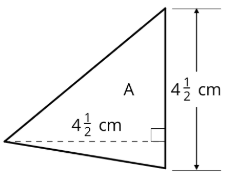
Exercise
- The area of Triangle B is
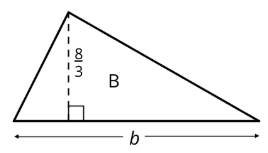
- The area of Triangle C is
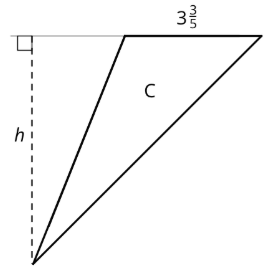
Exercise
Use cubes or the applet to help you answer the following questions.
- Here is a drawing of a cube with edge lengths of 1 inch.
- How many cubes with edge lengths of
- What is the volume, in cubic inches, of a cube with edge lengths of
- How many cubes with edge lengths of
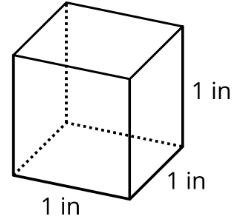
- Four cubes are piled in a single stack to make a prism. Each cube has an edge length of
- Use cubes with an edge length of
- For each prism, record in the table how many
prism length (in) prism width (in) prism height (in) number of volume of prism (in3) Table - Examine the values in the table. What do you notice about the relationship between the edge lengths of each prism and its volume?
- For each prism, record in the table how many
- What is the volume of a rectangular prism that is
Are you ready for more?
A unit fraction has a
- These are unit fractions:
- These are not unit fractions:
- Find three unit fractions whose sum is
- Find a box whose surface area in square units equals its volume in cubic units. How many like this can you find?
Summary
If a rectangular prism has edge lengths of 2 units, 3 units, and 5 units, we can think of it as 2 layers of unit cubes, with each layer having

To find the volume of a rectangular prism with fractional edge lengths, we can think of it as being built of cubes that have a unit fraction for their edge length. For instance, if we build a prism that is
- A height of 1 cube, because
- A width of 3 cubes, because
- A length of 8 cubes, because
The volume of the prism would be
The volume of the prism, in cubic inches, can also be found by multiplying the fractional edge lengths in inches:
Practice
Exercise
Clare is using little wooden cubes with edge length
Exercise
The triangle has an area of
What is the length of
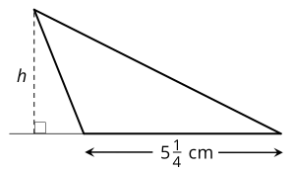
Exercise
- Which expression can be used to find how many cubes with edge length of
- Mai says that we can also find the answer by multiplying the edge lengths of the prism and then multiplying the result by
Exercise
A builder is building a fence with
(From Unit 4.4.1)
Exercise
Find the value of each expression. Show your reasoning and check your answer.
(From Unit 4.4.1)
Exercise
Consider the problem: A bucket contains
Write a multiplication and a division equation to represent the situation. Then, find the answer and show your reasoning.
(From Unit 4.3.2)
Exercise
There are 80 kids in a gym. 75% are wearing socks. How many are not wearing socks? If you get stuck, consider using a tape diagram.
(From Unit 3.4.3)
Exercise
- Lin wants to save $75 for a trip to the city. If she has saved $37.50 so far, what percentage of her goal has she saved? What percentage remains?
- Noah wants to save $60 so that he can purchase a concert ticket. If he has saved $45 so far, what percentage of his goal has he saved? What percentage remains?
(From Unit 3.4.2)

